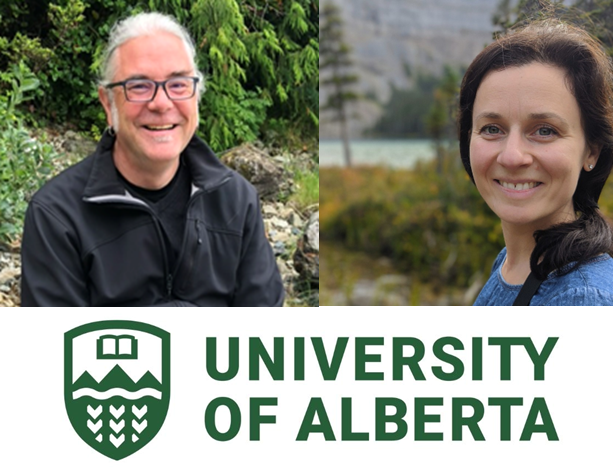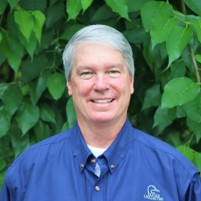NAWMP Webinar Series: Addressing Societal Benefits in NAWMP Work – Case Studies on Process
Presented by the NAWMP Integration Steering Committee, the purpose of this series of webinars is to share knowledge and experience within the waterfowl conservation community on how habitat conservation efforts can identify and address broad-based societal benefits (ecosystem services, natural values, green infrastructure, natural capital, ecological benefits, etc.). Presenters will address how they identified which benefits to consider, how they obtained and applied the related scientific information, how they employed an adaptive decision approach or framework, and how they communicated benefits to stakeholders. We are hopeful that this will encourage and inspire continued work in this realm, under the banner of “Connecting People, Waterfowl, and Wetlands.”
Upcoming:
January 28, 2026, 1 PM EST

Hunter fates to harvest rates: Integrating hunter behavior to inform waterfowl harvest management
Richard Berl, Research Scientist
USGS National Wildlife Health Center
The conservation of waterfowl in North America depends not only on healthy waterfowl populations and habitats, but also on the support of hunters and other conservationists; yet, the number of active hunters has been in steady decline over recent decades. To aid in understanding and managing the complexity of the interconnected waterfowl-hunter-harvest system, Berl et al. (2025, J Wildl Manage) developed a modeling framework that links the population dynamics and behaviors of hunters with those of waterfowl populations over time. This framework enables predictions of how changes in harvest regulations, cultural values, or hunter R3 and participation patterns might affect game species and people, offering a more complete picture for future management decisions and progress toward the integration of social objectives as the third pillar of waterfowl conservation across North America.
>>>Click here to Register Now!
Have an idea for a webinar topic? Please contact us!
Need help?
- If you registered but did not receive a confirmation link from Zoom, Check your junk mail or spam folder.
- Please make sure to enter your email address carefully - if you had a typo you'll need to register again with the correct one.
- Having trouble joining? Please check your system in advance to make sure that you can successfully connect on the practice session. https://support.zoom.us/hc/en-us/articles/115004954946-Joining-and-participating-in-a-webinar-attendee-
- If you are clicking on the Join Webinar and "nothing" appears to be happening, you could be prevented by virus blocking software, or your IT dept. Contact your IT Staff.
- If you are unable to attend, we will record and post the webinars, so if you miss the live version you can watch it online soon after its conclusion. Check back to this page for the recording links.
- Have questions or need additional help? Contact rick@djcase.com for assistance.
Past Webinars
August 15, 2025, 1-2 PM Eastern
Mid-Continent Light Geese – Still Presenting Challenges
Mark Vrtiska, Professor of Practice
University of Nebraska-Lincoln
Coordinator, Tern and Plover Conservation Partnership
In the mid- to late 1990s, the mid-continent population of light geese (lesser snow and Ross’s geese) prese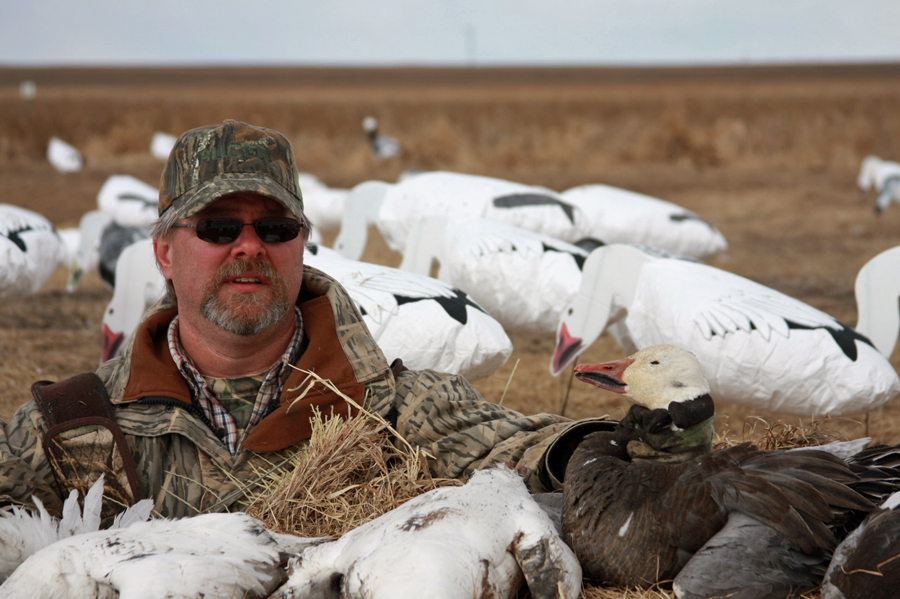 nted managers with a new, unique challenge in wildlife management in dealing with their overabundance and effects on northern habitats. The issue was highlighted at national levels and entailed an unprecedented marketing campaign to disseminate information to the hunting and non-hunting public about the problem and potential solutions. The main solution implemented was the Light Goose Conservation Order (LGCO) that allowed the use of special measures previously deemed illegal, with the goal of reducing the population by half. The LGCO has continued over the past 25 years, despite evidence that it was not having the intended effect on the population. Since about 2015, the mid-continent light geese population has been declining and currently is near levels where management actions may be required. Possible changes in either the LGCO or regular hunting seasons may require another effort in informing interested constituencies about the current status of the mid-continent population of light geese.
nted managers with a new, unique challenge in wildlife management in dealing with their overabundance and effects on northern habitats. The issue was highlighted at national levels and entailed an unprecedented marketing campaign to disseminate information to the hunting and non-hunting public about the problem and potential solutions. The main solution implemented was the Light Goose Conservation Order (LGCO) that allowed the use of special measures previously deemed illegal, with the goal of reducing the population by half. The LGCO has continued over the past 25 years, despite evidence that it was not having the intended effect on the population. Since about 2015, the mid-continent light geese population has been declining and currently is near levels where management actions may be required. Possible changes in either the LGCO or regular hunting seasons may require another effort in informing interested constituencies about the current status of the mid-continent population of light geese.
June 17, 2025, 1-2 PM Eastern
Conservation Leaders for Tomorrow
Dave Windsor, Executive Director
Conservation Leaders for Tomorrow (CLfT)
The Max McGraw Wildlife Foundation’s Conservation Leaders for Tomorrow (CLfT) program was created in 2004 in a joint effort with the Wildlife Management Institute. The first workshop, originally designed for university students enrolled in a wildlife management or natural resource program, was conducted in October 2005. With the success of the university program, McGraw added a new workshop model in 2010, focused on delivering highly effective professional development to natural resource agency staff charged with the management of our wildlife and natural resources. Being the only professionally designed and delivered curriculum for natural resource agency professionals that emphasizes hunting and the consumptive use of wildlife as an important part of wildlife conservation and an integral piece of the North American model, the professional program has grown from two annual workshops to eight. CLfT, now in its 20th year, is delivered primarily through 5-day, in-person, intensive workshops and, since 2020, through an online hybrid program that includes live Zoom discussion sessions. Survey data, anecdotal feedback, and comments by agency administrators strongly suggest that the program is successful in accomplishing its goals and meeting the desired outcomes of agency leadership.
April 9, 2025, 1-2 PM Eastern
The Human Dimensions of Municipal Habitat Stewardship in Newfoundland and Labrador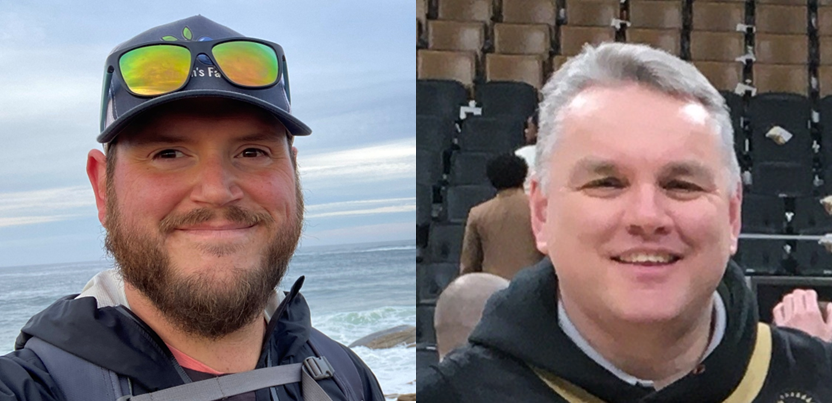
Zachary Burrows, Executive Director
Stewardship Association of Municipalities (SAM) Inc.
Jonathan Sharpe, Habitat Ecologist
Wildlife Division, Newfoundland and Labrador Department of Fisheries, Forestry and Agriculture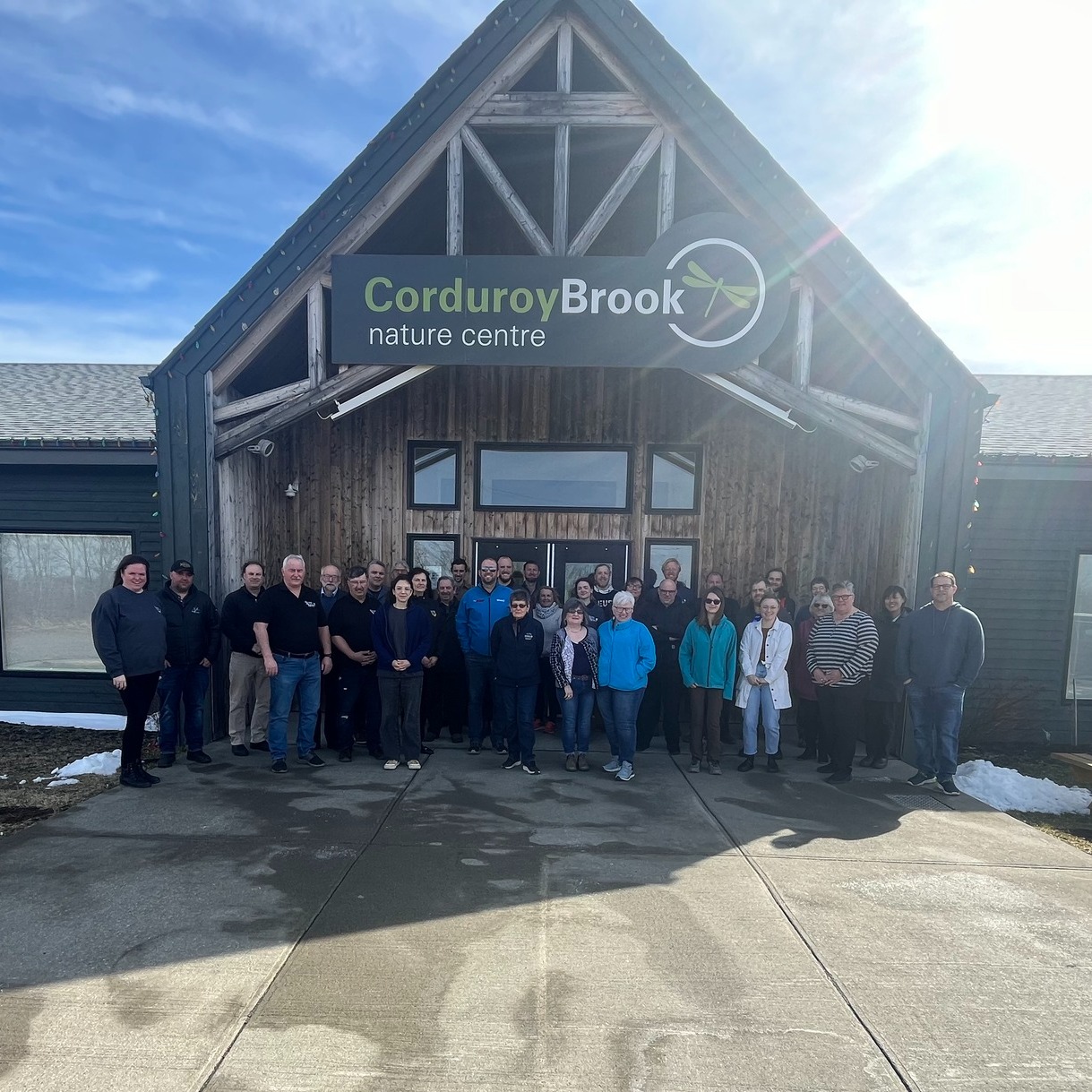
In this virtual presentation, Zach and Jonathan will provide an overview of municipal habitat stewardship in Newfoundland and Labrador. Municipalities manage large areas of land, some of which is productive wildlife habitat. The Wildlife Division, Department of Fisheries, Forestry and Agriculture, and the Stewardship Association of Municipalities (SAM) Inc. work in partnership to identify wildlife habitat and to encourage municipalities in conservation efforts through public habitat stewardship agreements and provisions in Municipal Plans and Development Regulations. Since the first agreement signed in 1993, SAM has supported over 50 communities in NL, helping to conserve approximately 70,000 acres of important biodiverse habitat.
March 27, 2025, 1-2 PM Eastern
Central Grasslands Social Science Synthesis, Needs Assessment, and Integration Plan
Ashley Gramza, Social Science Lead
Zach Hurst, Conservation Design Director
Ryan Roberts, Social Science Specialist
Playa Lakes Joint Venture
In this webinar, we will summarize a recently completed synthesis report on social science related to Central Grasslands conservation efforts, funded by the tri-national Commission for Environmental Cooperation. We conducted a grassland conservation social science literature review, a synthesis of pre-existing producer surveys to understand the challenges and opportunities for conservation in the United States, Mexico, and Canada, and a social science needs assessment and prioritization effort with conservation delivery professionals. These efforts informed a broader integration plan that identifies information and knowledge gaps and opportunities for social science integration into grassland conservation delivery to more effectively address the decline of the Central Grasslands. We will end the presentation with a discussion of how to put our recommendations into action and ensure future collaboration and coordination across social science and conservation delivery.
February 20, 2025, 1-2 PM Eastern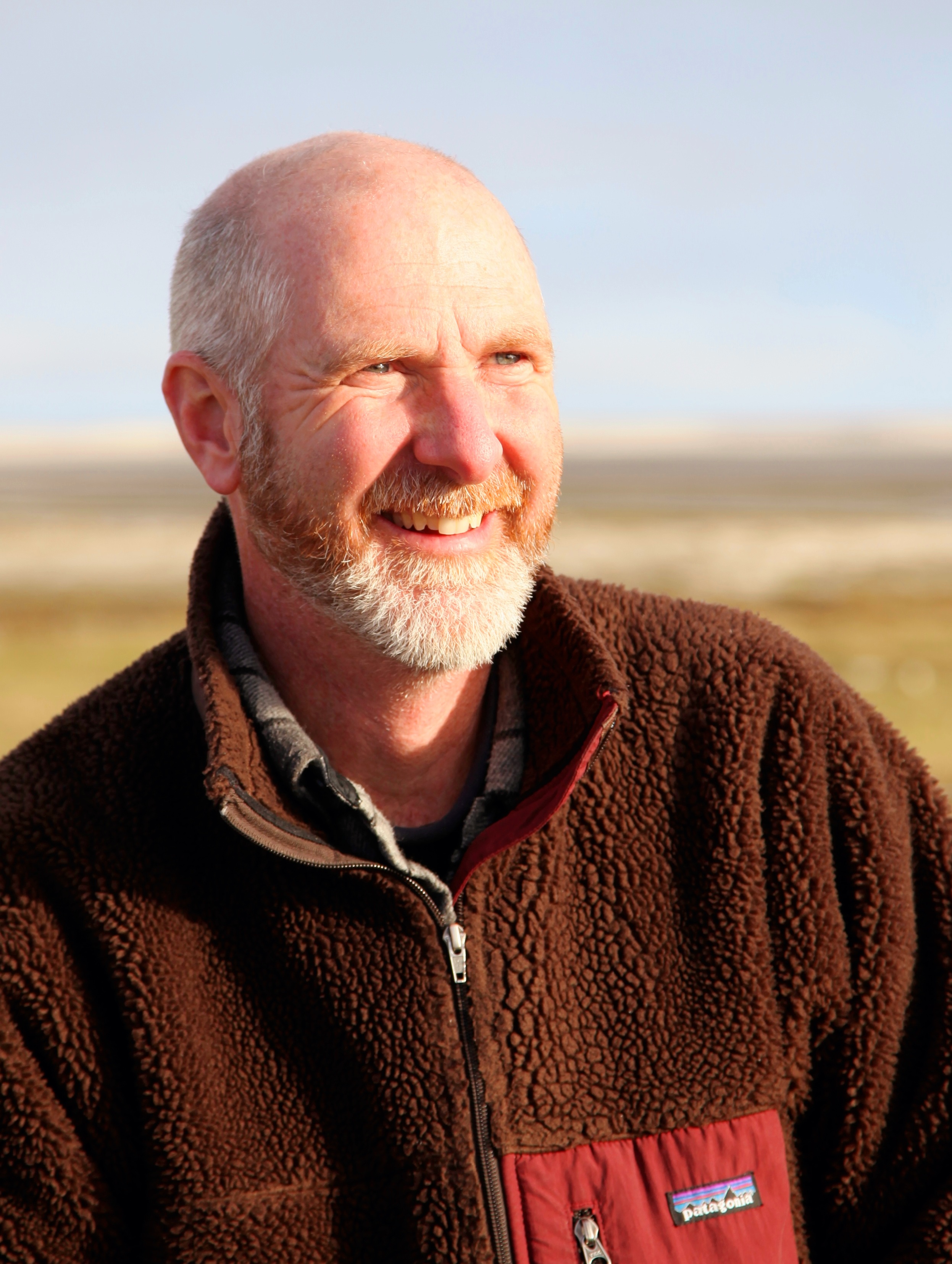
Conservation biology of the northern common eider duck in Arctic Canada: 35 years of scientific and Indigenous discoveries, and the people who shared in them
Grant Gilchrist, PhD, Senior Research Scientist, Wildlife Research Division
National Wildlife Research Centre, Environment and Climate Change Canada
In recent years, wildlife organizations such as the NAWMP and Sea Duck Joint Venture have been supporting a growing diversity of community-based conservation efforts. As just one example, many Indigenous groups share a deep concern for the health and management of waterfowl populations and have abundant wildlife-related knowledge to share. Because of this natural alignment of interests, there are currently several successful collaborations ongoing between Indigenous groups and waterfowl conservation programs in both North America and Greenland. I will review one of them, by drawing on 35 years of eider duck research in the Canadian Arctic. Many of our eider research projects simply would not have been possible without the direct contributions of Inuit. In addition, our research was also often driven by Inuit priorities, and in particular, their early detection of emerging conservation issues such as disease, altered predator-prey relationships, and declining populations that otherwise would have been missed. This isn’t easy, though. Despite these successes, we still find that obstacles to Indigenous participation remain, and I will present our collective efforts to diminish them over both the short and long-term.
November 20, 2024, 1-2 PM Eastern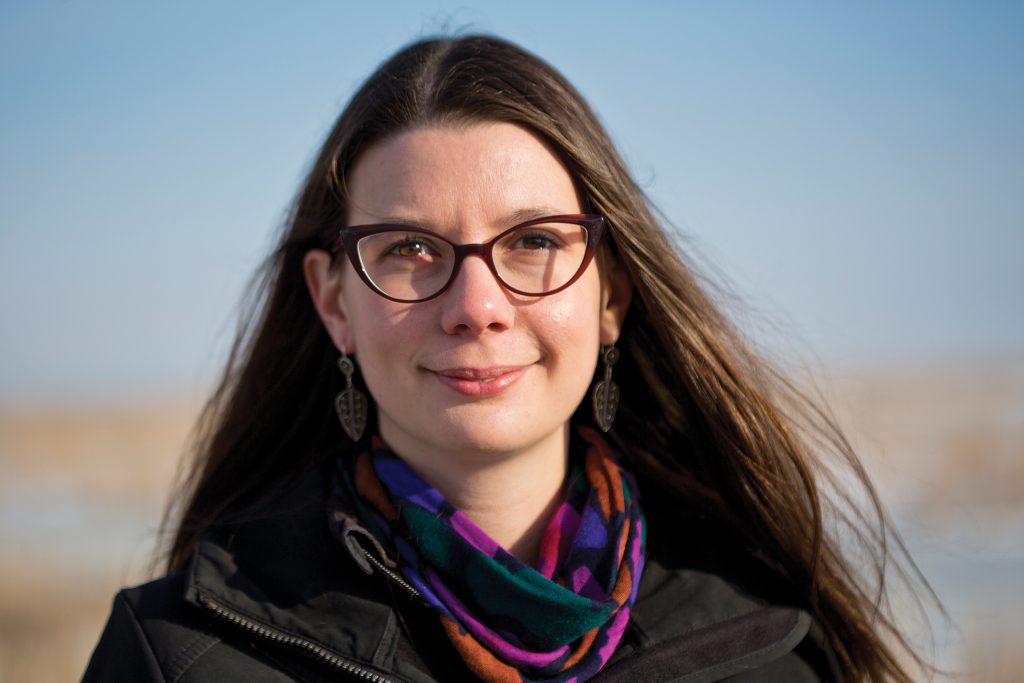
Maximizing co-benefits of conservation: A wetland ecosystem services tool for Prairie Canada
Lauren Bortolotti, PhD, Research Coordinator
Ducks Unlimited Canada
The world is facing dual crises — global climate change and biodiversity loss. Current funding to address these crises is insufficient, so there is a need to maximize return on investments from conservation. Researchers at Ducks Unlimited Canada’s Institute for Wetland and Waterfowl Research have developed a decision support tool to quantify carbon, biodiversity, water regulation and nutrient retention services from wetlands in Prairie Canada. This tool allows us to quantify the benefits of waterfowl habitat conservation and can be used to examine synergies and trade-offs amongst ecosystem services.
October 21, 2024, 1-2 PM Eastern
Wetlands of Nebraska Outreach and Education Project
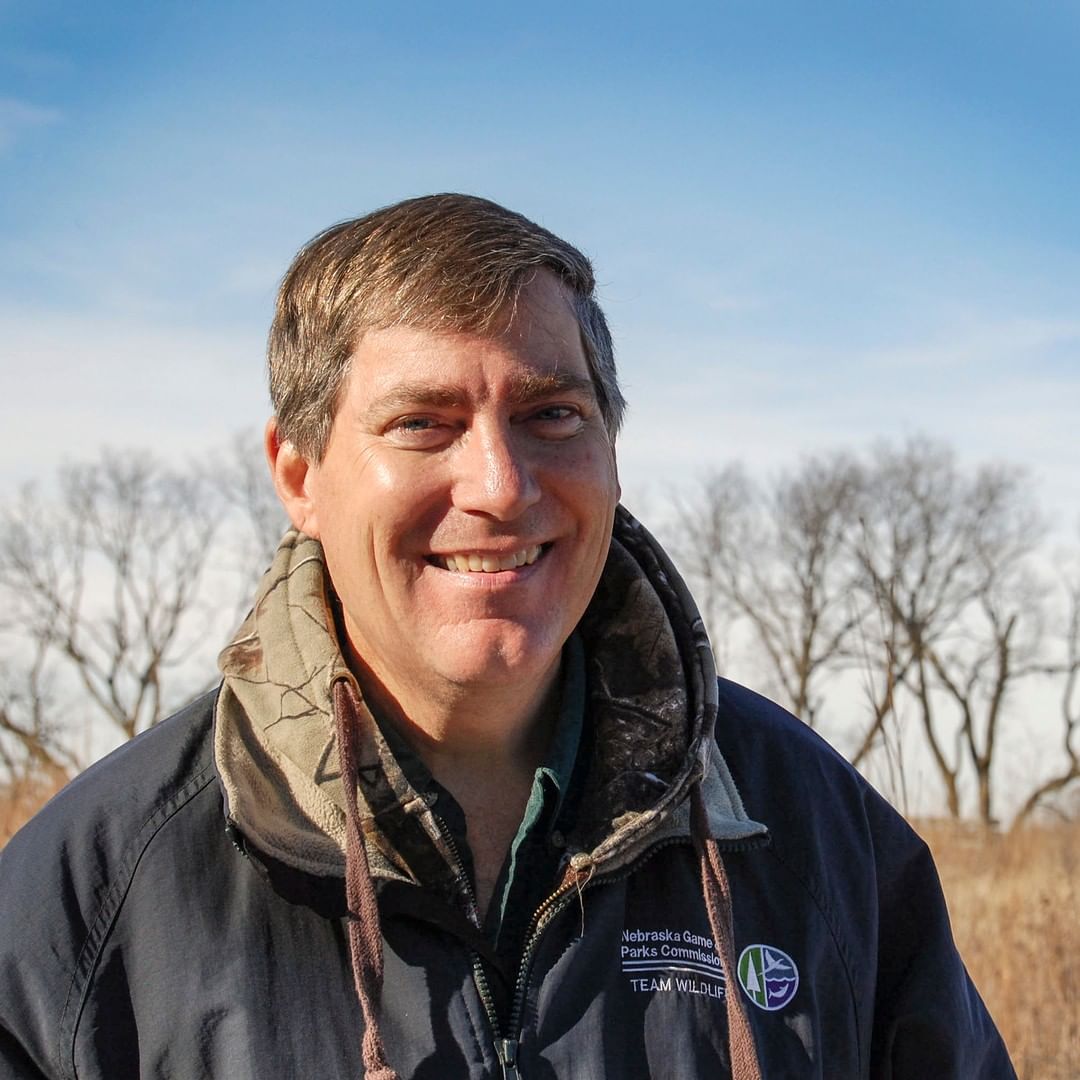
Ted LaGrange, Wetland Program Manager
Nebraska Game and Parks Commission
The main objective of the project was to produce and distribute a series of integrated outreach and education products to increase awareness of the importance of wetlands in Nebraska and an understanding of the need for wetland conservation. The products included: five feature films (view the Playa film here), five ESRI StoryMaps, a Guide to Nebraska’s Wetlands, a booklet for kids, and two educational videos and lesson plans for teachers. The purpose for the project, the methods used, and the results will be discussed, and some film clips will be shown. The films and other products tell stories that link wetland habitat to wildlife and ultimately to benefits wetlands provide to people. The methods used on this project have transferability to other areas of the country to benefit wetland conservation.
This project was led by the Nebraska Game and Parks Commission and was funded primarily by a grant from the U.S. Environmental Protection. Partners helping with grant implementation included: Platte Basin Timelapse (PBT) at the University of Nebraska-Lincoln, the Nebraska Cooperative Fish and Wildlife Research Unit, and Ducks Unlimited.
The products are available at www.NebraskaWetlands.com
September 5, 2024, 1-2p EDT
Engaging “the Other” in Wildlife Conservation
Dr. Leeann Sullivan, Research Coordinator
Permanent Commission on the Status of Racial Indigenous and Tribal Populations (Maine)
Emily Boettger - Boston College
Social conflicts in wildlife conservation often center on the different ideological perspectives of consumptive v. non-consumptive users. While meeting the needs of both groups does present a conservation challenge, it marks only one of many possible “others” that may come into conflict within the public, between the public and experts, and even across species lines. In the face of multiple threats to wildlife – from climate change and habitat loss to increasing social discord – finding ways to bring people together around conservation within our current engagement structures can often feel impossible. Here, we explore whether changing those structures may help to shuffle, obscure, deconstruct, and reorganize social identities to open new opportunities for collaborative conservation. Specifically, we explore possible applications of participatory futuring in the conservation space that may help practitioners and the public alike come to see themselves as working toward a common vision amid an uncertain future.
Additional Resources:
- (Keys & Meyer) Visions of the Arctic Future: Blending Computational Text Analysis and Structured Futuring to Create Story-Based Scenarios
- (Keys et al.) Interactive Resource: Radical Ocean Futures:
- (Tsing et al.) Interactive Resource: Feral Atlas
- (Sullivan) North American Talk (Annotated)
- (Manfredo et al) Values, trust, and cultural backlash in wildlife conservation
- (Sullivan et al) Technocracy in a time of changing values
July 9, 2024, 12-1p EDT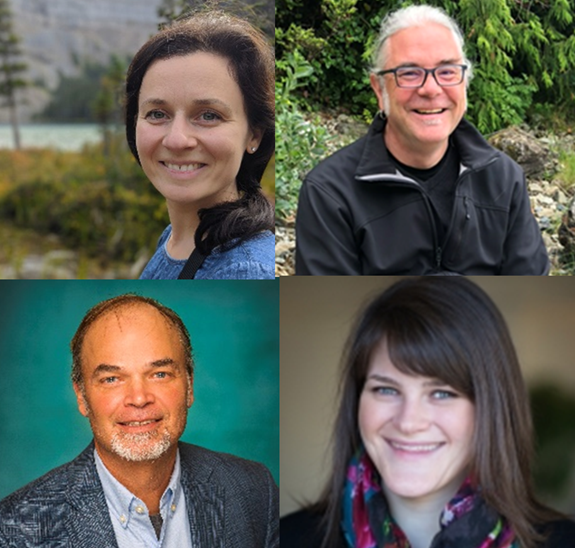
Exploring Canadian preferences for bird and habitat conservation using a discrete choice experiment
Katie Sainsbury, Ph.D., University of Alberta
Howie Harshaw, Ph.D., University of Alberta
Peter Schuhmann, University of North Carolina Wilmington
Carly Sponarski, Canadian Forest Service
Understanding of peoples’ preferences for bird and habitat conservation can help to foster the NAWMP’s relevancy and realise Goal 3: ‘Growing numbers of waterfowl hunters, other conservationists and citizens who enjoy and actively support waterfowl and wetlands conservation.’ Discrete choice experiments (DCE) are an economics-based method used to quantify preferences (McFadden 1974) by exploring the relative importance of different factors that people consider when making decisions. In this study, we surveyed Canadians to find out about their willingness to donate to different conservation programs based on their preferences for different habitat types, bird conservation characteristics, habitat location, and quantity of habitat that might be conserved. In total, 2578 respondents completed the DCE during November and December, 2022. We combined preference data with information about respondent socio-demographic characteristics and habitat value orientations. Location (in or out of province) was an important determinant of donation amounts and conservation of natural habitats was preferred to agricultural contexts. Bird species that are at risk of extinction or widespread but declining were preferred to species of cultural importance. Through the data, we identified four types of conservationists in Canada. We conclude by discussing the implications of our findings for the NAWMP and other conservation practitioners seeking to engage with the Canadian public.
Canadians' value orientations towards wetland habitats
Howie Harshaw, Ph.D., University of Alberta
Katie Sainsbury,Ph.D., University of Alberta
Carly Sponarski, Canadian Forest Service
Dean Smith, AFWA
Join us for Part 1 of two-part series!
We surveyed Canadians in November - December 2022 (n = 3358) to better understand their attitudes, beliefs, and preferences about waterfowl and wetlands to support decision-making. To explore Canadians' perspectives about wetland habitats, we adapted Manfredo et al.'s (2009) Wildlife Value Orientations scale to reflect people's value orientations towards wetlands. Value orientations represent basic beliefs that give meaning to fundamental values (Fulton et al. 1996, Manfredo et al. 2009), and can shape different attitudes and behaviours. We specified, tested, and compared four different models of respondents’ value orientations. The model that included the four habitat value orientation dimensions performed the best. Half of respondents were classified as mutualists, 26% were pluralists, 14% were distanced, and 11% were traditionalists. We explore how these value orientation groups differ in their attitudes about bird habitats and demographic characteristics.
January 24, 2024: 3p-4p EST
Transforming the Coastal Wetland Landscape on Molokaʻi through a Wetland Prioritization Process
Helen Raine, Hawaiʻi Conservation Coordinator, Pacific Birds Habitat Joint Venture
Pūlama Lima, Executive Director, Ka Ipu Makani
Judith Drexler, Wetland Ecologist, USGS California Water Science Center
The Molokaʻi Wetland Partnership (MWP), in collaboration with Pacific Island Climate Adaptation Science Center (PI-CASC), carried out a project to prioritize coastal wetlands of Molokaʻi for restoration in 2022/23. The project used 1) rapid field assessments of hydrology, vegetation, soils, and birds, 2) a comprehensive analysis of endangered bird habitat value, 3) site spatial characteristics, 4) sea-level rise projections for 2050 and 2100 and wetland migration potential, and 5) preferences of the Native Hawaiian and local community in a GIS site suitability analysis to prioritize sites for restoration. The site suitability analysis ranked sites in order of their likelihood to become fully functioning wetland habitat after restoration. The first phase of restoration planning has now been funded for the top sites and the prioritization process has been rolled out statewide, showing the effectiveness of this pilot project. Dr. Judy Drexler (USGS), Pulama Lima (Ka Ipu Makani) and Helen Raine (Pacific Birds) will describe how the project was carried out, benefits to date, and future plans to transform the Molokaʻi coastal wetland landscape in a way that honors the local community vision.
October 27, 2023: 1p-2p EDT
Building Data-Driven Partnerships to Accelerate Wetland Conservation to Benefit Wildlife and People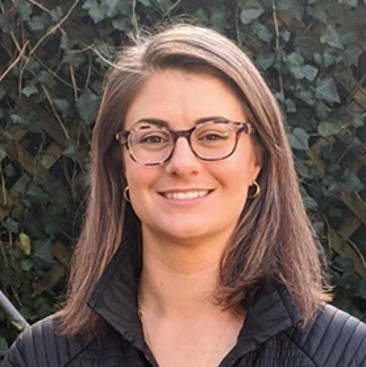
Ellen Herbert, PhD
Senior Scientist, Sustainability and Nature Based Solutions, Ducks Unlimited
Historically, the conservation of wetland ecosystems throughout North America was often a product of coalitions of public agencies and private organizations focused on a limited set of outcomes, for instance the management of fish and wildlife populations. The recognition that the loss and degradation of wetlands still outpaces gains from protection and restoration has led to concerted efforts to eliminate silos and accelerate wetland conservation by leveraging the multiple benefits wetlands provide wildlife and people. Central to these efforts to build financial and political support for wetland conservation is the collection and synthesis of data that illustrate multiple wetland benefits and where the greatest overlap in these benefits occurs. This presentation will highlight specific examples illustrating how data is being utilized to advance for wetland conservation for the benefit of multiple stakeholder group, including: (1) Collaborative research in Iowa and Michigan to develop geospatial models and wetland design criteria that maximize migratory bird habitat and water quality improvement functions. (2) Hybrid climate forecasting and natural infrastructure capacity studies to identify wetland and floodplain restoration projects to reduce the impacts of floods and droughts on communities along the Mississippi River and provide critical migratory and wintering habitat on the Mississippi Flyway. (3) Discussion of a suite of studies designed to quantify the climate mitigation potential of wetland and associated grass and cropland conservation in priority waterfowl breeding habitats in the Prairie Pothole Region of North America. Each example will highlight the connection between data, partnerships, policy, fundraising and conservation program delivery.
September 26, 2023: 1p-2p EDT
Exploring the intersections between wetlands, water quality, and waterbird conservation in Iowa’s agricultural landscapes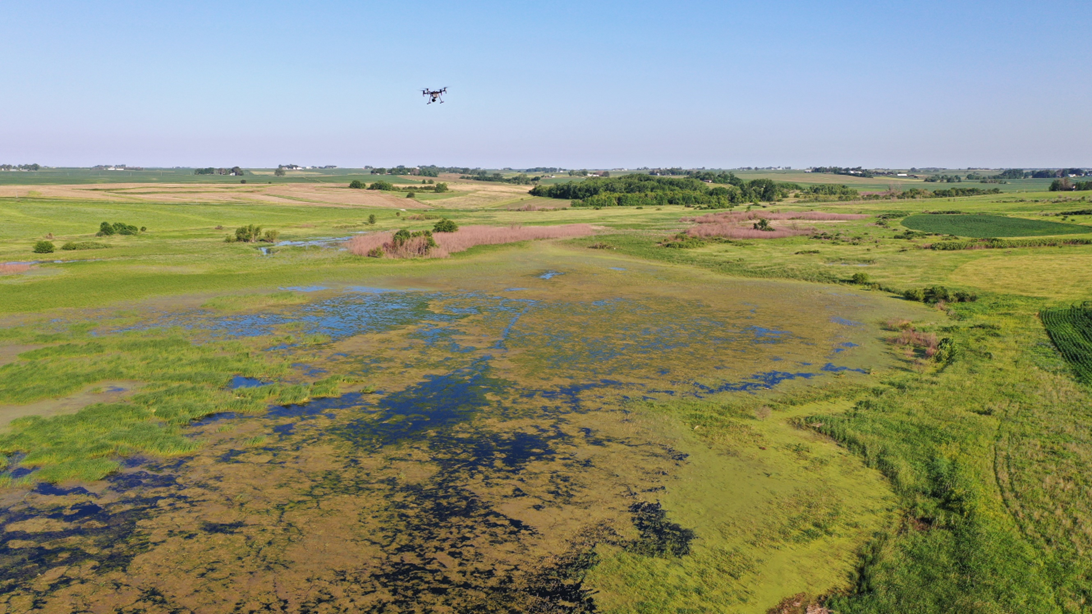
Adam Janke, Associate Professor Department of Natural Resource Ecology and Management at Iowa State University.
Mike Shannon, Biologist, Ducks Unlimited
This webinar will explore ongoing efforts in Iowa to use constructed wetlands to mitigate nutrient pollution in surface waters originating from agricultural landscapes and present recent research documenting their use by breeding birds.
June 15, 2023: 1p-2p EDT
National Canadian Bird Habitat Survey
Howie Harshaw, Ph.D.
Associate Professor, University of Alberta
Katie Sainsbury, PhD
Postdoctoral Fellow, Unversity of Alberta
In the fall of 2022, we conduced a national survey to better understand Canadians' perceptions of, and experiences with, wetlands and other bird habitat settings. We received 3,370 completed responses from people representing the four habitat Joint Venture regions. In this webinar, survey highlights will be presented, including Canadians' familiarity with different wetland types, constraints to wetland visitation, and management actions that might increase visitation. We also asked participants about their pro-environmental behaviors; notably, members of the general public seem less engaged in pro-environmental behaviors than waterfowl hunters and birdwatchers are. We conclude with a discussion of suggestions for increasing wetland visitation and addressing the relevancy of wetlands for people.
May 11, 2023: 2p-3p EDT
The Role of Indigenous Resource Management in the Recovery of Endangered Hawaiian Waterbirds and Provision of Ecosystem Services to Communities in Hawaiʻi
Dr. Kawika Winter, Reserve Manager
He`eia National Estuarine Research Reserve
Lindsey Nietmann, Biologist
Hawaii Division of Forestry and Wildlife
Dr. Kristen Harmon, Researcher
University of Hawai‘i, Mānoa
Kaleo Wong, Director
Kauluakalana
Hawaiians traditionally used a system of adaptive resource management that enhanced biocultural diversity, supported endemic waterbirds, provided resilient food systems and offered similar ecosystem services to natural wetlands. Revitalizing this approach in the restoration of wetlands can address conservation issues, including the recovery of Threatened and Endangered Waterbirds, as well as supplying sustainable food for local communities and mitigating climate impacts. Loʻi kalo (taro pondfields) also have the potential to compensate for projected losses of wetland habitat due to sea level rise in Hawaiʻi. In this presentation, speakers will discuss the history of Hawaiian wetland management, present the latest research, and talk about their experience of on-the-ground waterbird management in loʻi.
March 9, 2023, 11a-12p EST
Who Will Mind The Marsh? NAWMP’s efforts to sustain the training of future waterfowl and wetland professionals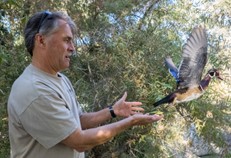
John Eadie, Ph.D.
Professor, UC Davis Dept. of Wildlife, Fish, and Conservation Biology
The NAWMP 2018 Update emphasized connecting people, waterfowl, and wetlands. Fundamental to science and conservation are appropriately trained people. The 2018 Update recognized this need in Recommendation 7: “Bolster training programs for future waterfowl management professionals.” A committee was established to address this recommendation and in 2019 released the North American Waterfowl Professional Education Plan (NAWPEP) which oulined the current state of our professional training, future needs, and some ambitious plans for the future. This webinar will provide an update on the NAWPEP and seek input and discussion on future directions.
February 9, 2023, 11a-12p EST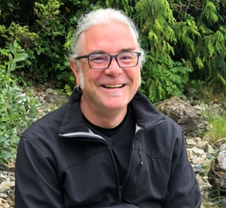
What are Canadian waterfowl hunters' trip preferences, and how do they compare to those of North American waterfowl hunters?
Howie Harshaw, Ph.D.
Associate Professor, University of Alberta
We surveyed Canadian waterfowl hunters in November 2016—January 2017 (n = 1280) to better understand their hunting trip preferences using a discrete choice experiment. Canadian waterfowl hunters prefer bigger harvests (six birds), journey times of one hour or less, easy to moderate site access, seeing upwards of 250 birds on shoot days, and experiencing none to medium levels of competition. We identified 6 latent classes of Canadian waterfowl hunters (2 more than we found at a continental scale). We did not identify any significant variation between the classes in terms of the distributions of age, income, number of days hunted, self-identification as a conservationist, and hunting bag preferences. Canadian waterfowl hunter preferences seem to be similar to those of North American waterfowl hunters. Canadian hunters have less strong preferences for six-bird harvests than the lower U.S. states. Although there is variation in preference for harvest size between the flyways at a continental level, this flyway variation is not evident among Canadian waterfowl hunters. Implications for the management of waterfowl hunting in Canada will be discussed, including strategies to increase waterfowl hunting participation.
Dec. 13, 2022, 1-2 PM EST
Exploring Stakeholders’ Support for and Potential Stewardship of Michigan’s Coastal Wildlife Management Areas
Barb Avers, Ph.D.
Waterfowl and Wetland Specialist, Michigan Department of Natural Resources 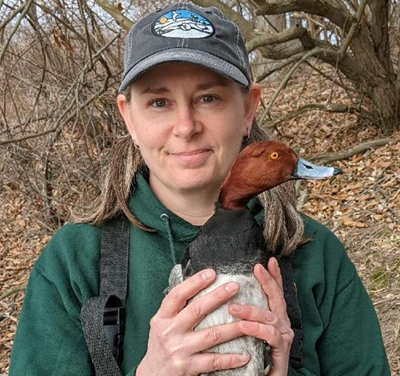
State wildlife agencies (SWAs) primarily rely on hunter-related funds to pay for wildlife and habitat management at wildlife management areas (WMAs). As hunting participation declines, there are concerns about the future of wildlife conservation support and funding, relevancy of SWAs, and long-term sustainable wildlife management. To address these concerns, there have been recommendations such as increasing and diversifying outdoor recreation opportunities, connecting wildlife conservation to the broader ecosystem services provided by wildlife management actions, and exploration of broad-based funding mechanisms. My recent doctoral research sought to understand the stewardship potential of key stakeholders that use Michigan DNR WMAs that are intensively managed for waterfowl habitat and waterfowl hunting opportunities. During this webinar, I will present results from assessing stakeholder attitudes and preferences for WMA management; investigating stakeholder perceptions of ecosystem services resulting from WMA management; exploring key variables that influence conservation behaviors; and exploring support for a diversity of funding options among WMA stakeholders. I will also present several implications and recommendations for SWAs to consider and how the Michigan DNR is incorporating these findings into its planning and management of WMAs
Nov. 7, 2022, 12-1 PM EST
Choosing an optimal duck season: integrating hunter values and duck abundance
Josh Stiller, Game Bird Wildlife Biologist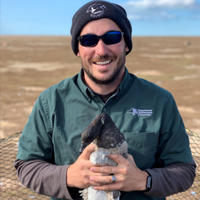
New York State Department of Environmental Conservation
State wildlife agencies have long struggled to identify optimal duck hunting season dates that meet the diverse and often competing interests of hunters. Many approaches have been used to allow the regulated community to participate in the decision-making process, including public hearings, hunter season-date preference surveys, and hunter task forces or committees. Unfortunately, these methods are typically not data-driven or transparent processes that allow the entire regulated community to participate in the decision-making process. I will discuss how we integrated a human dimensions survey exploring hunter values with spatiotemporal abundance models derived from eBird citizen science data to determine the optimal duck seasons in New York State. All public engagement processes have strengths and weaknesses, and I will discuss what we felt worked well and where there is room for improvement in the next iteration of our structured decision-making process for selecting duck season dates.
May 16, 2022, 2-3 PM EDT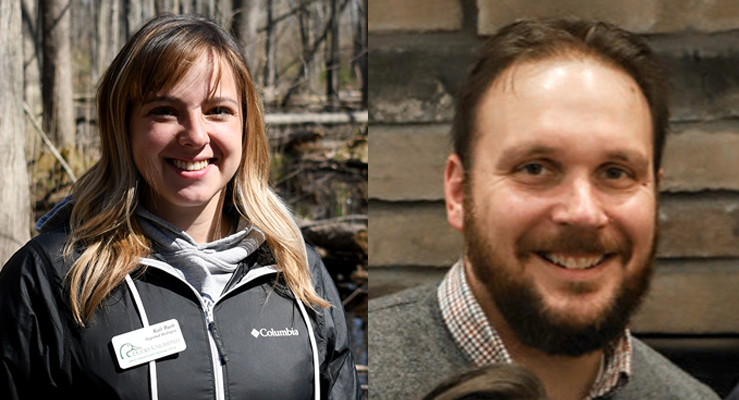
Wetlands for the people: Bird habitat conservation vital for communities
Kali Rush, Regional Biologist, DU
Chris Sebastian, Sustainability Lead and External Affairs Manager, DU Great Lakes//Atlantic Region
Historic rainfall across Michigan in 2020 caused two dams to fail in the middle of the state, creating extreme flooding and forcing more than 10,000 people from their homes. Managers at the recently restored Shiawassee National Wildlife Refuge opened the floodgates and were able to fill the entire 10,000-acre basin with 10 feet of floodwater, significantly reducing the flooding impact to surrounding landowners. From coastal erosion protection to groundwater recharge to improved drinking water quality, this webinar will show how wetlands, conserved initially for bird habitat, are crucial to the residents living near them.
April 21, 2022, 12-1 PM EDT
Conserving Atlantic Coast Salt Marshes: Aligning a Species/Habitat Priority and other Public Benefits
Mitch Hartley, PhD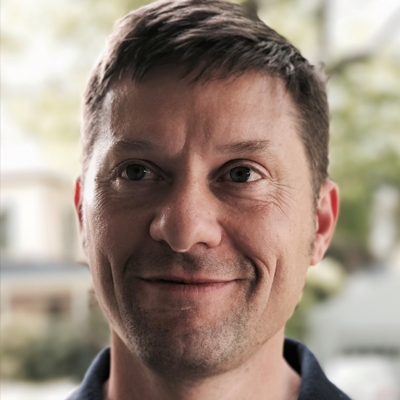
Northeast Coordinator, Atlantic Coast Joint Venture
Starting in 2016 the Atlantic Coast Joint Venture (ACJV) prioritized salt marsh habitat conservation due to rapid declines in habitat conditions and populations of several bird species. The ACJV adopted three flagship species based on conservation concern, geography, and utility as representative species: American Black Duck, Saltmarsh Sparrow, and Black Rail. This species/habitat emphasis was a major shift for the ACJV partnership, but has reaped major benefits. In part, this is due to broad interest in coastal resiliency across the East Coast, and the link between bird habitat conservation and many different public benefits--some of which involve economic benefits and risks worth billions of dollars annually. We will describe how this focus has energized our partnership, resulted in major funding opportunities, and revealed some surprising challenges.
March 3, 2022, 1-2 PM EST
A multi-scale decision support tool to guide implementation of the North American Waterfowl Management plan in WI, USA
Jake Straub, PhD, Research Scientist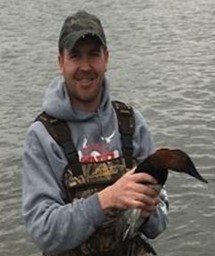
Research Foundation for State University of New York (SUNY)
The goals of the North American Waterfowl Management Plan target a combination of biological and social objectives that are prioritized regionally through Joint Venture partnerships. Local detail is critical for implementing waterfowl habitat delivery and making efficient use of limited funds for conservation. We developed a transparent framework to identify and prioritize landscapes for conserving waterfowl habitat at the Hydrologic Unit Code 12 watershed scale in Wisconsin, by maintaining continental and regional priorities, and including local landscape characteristics, biological and social criteria, and researcher, manager, and biologist expertise. Our models are science-based, transparent, defensible, and can be modified as social, political, biological, and environmental forces change.
November 10, 2021, 1-2 PM EST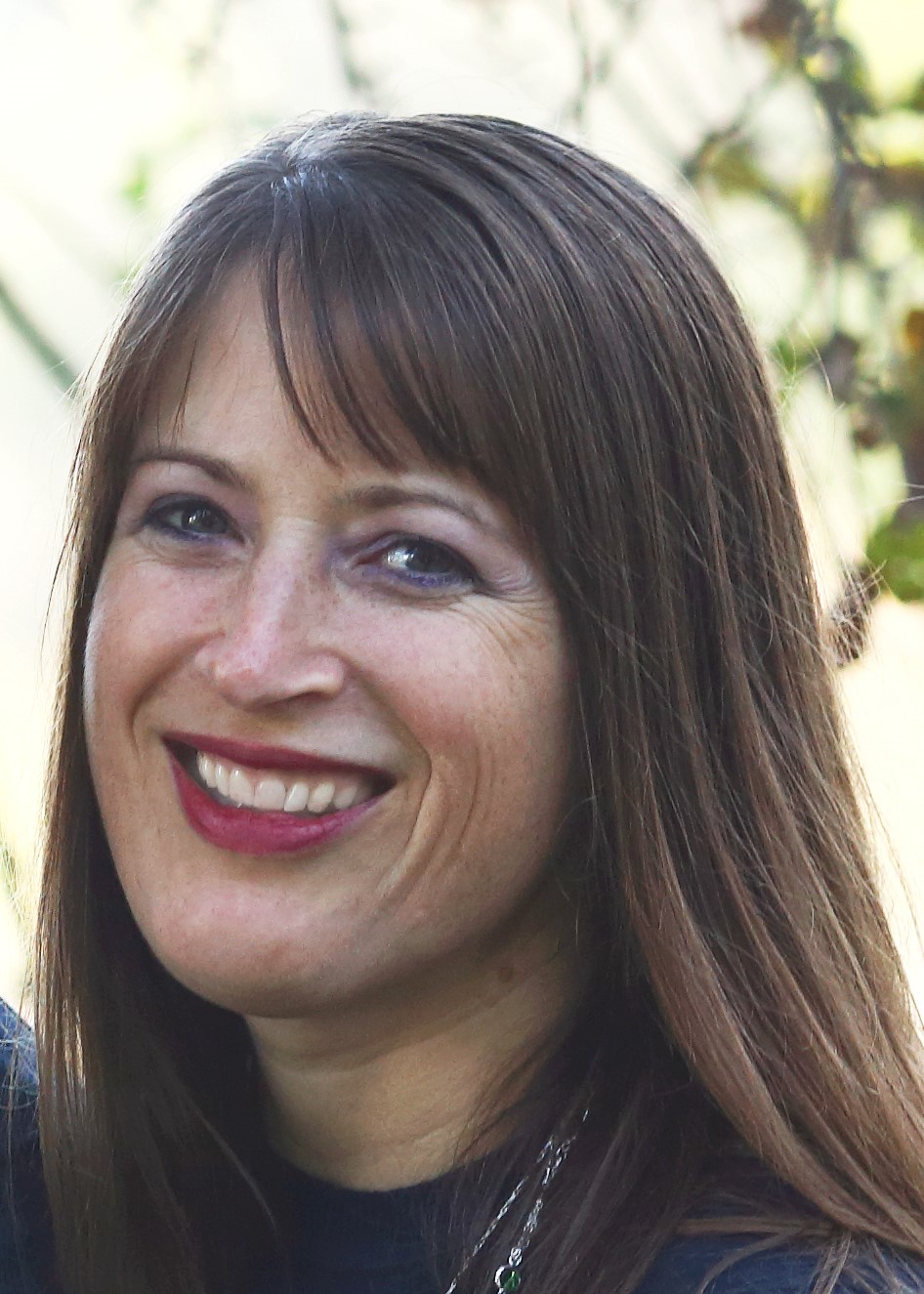
NAWCA partnerships and multi-benefit restoration in north San Francisco Bay
Renee Spenst, Ph.D.
Regional Biologist, San Francisco Bay and California Coast
Dr. Renee Spenst will highlight two NAWCA-funded projects in north San Francisco Bay that also provide a broad suite of benefits, including shoreline protection, stormwater filtration, infrastructure protection, and recreational opportunities.
October 15, 2021, 1-2:30 PM EDT 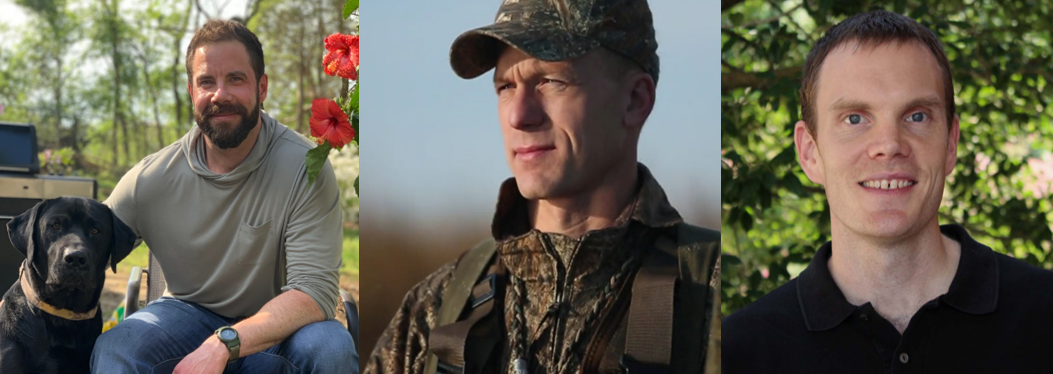
Waterfowl Hunter R3 in Colleges and Universities
Presenters: Mark Horobetz, Manager of Youth and Education Programs, Ducks Unlimited, Inc.
Joel Brice, Chief Conservation Officer, Delta Waterfowl
Lincoln Larson, Ph.D., Associate Professor, Dept. of Parks, Recreation and Tourism Management, North Carolina State University
This webinar will include three presenters who will focus on connecting college and university students to hunting, including efforts to increase demographic diversity. These efforts play an important role in engaging people in waterfowl conservation, either as future waterfowl professionals; citizen supporters, leaders and advocates for conservation; or simply as individuals who benefit from this type of recreational connection to nature. Dr. Lincoln Larson, of North Carolina State University, will present results from human-dimensions research of diverse undergraduate students and their potential for becoming hunters and supporting hunting. Joel Brice, Chief Conservation Officer for Delta Waterfowl, will describe Delta’s University Hunting Program – a dynamic curriculum in which wildlife management students receive instruction and training that culminate in a waterfowl hunt as part of a regularly scheduled wildlife course. Ducks Unlimited’s Manager of Youth and Education Programs, Mark Horobetz, will discuss the success of DU’s collegiate chapter program and how this group of volunteers plays a vital role in outdoor peer to peer mentoring through a variety of platforms.
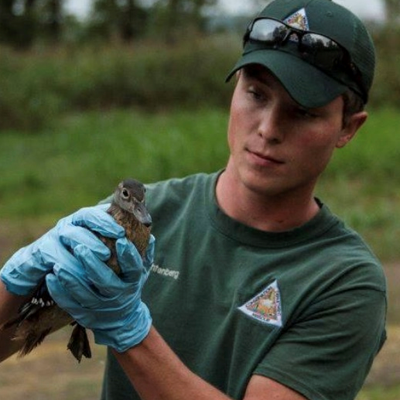
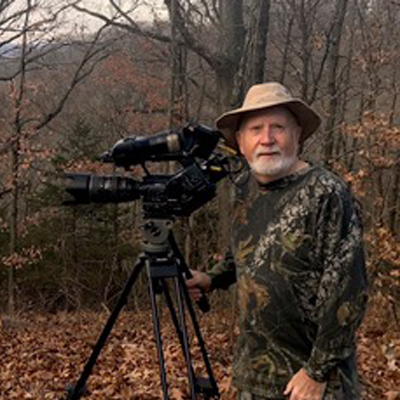 September 17, 2021, 2-3 PM EDT
September 17, 2021, 2-3 PM EDT
H. Carl Gerhardt, Curators’ Distinguished Professor Emeritus of Biological Sciences
Brady Lichtenberg, Eagle Bluffs Conservation Area Manager & Wildlife Biologist, Missouri Department of Conservation
Eagle Bluffs Conservation Area - using wetlands to filter city wastewater, benefitting both nature and people
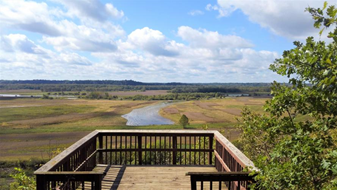 Celebrating its 25th anniversary in 2020, learn more about how Eagle Bluffs Conservation Area came to be and how both nature and people benefit. Through citizen action, the Conservation Department purchased and developed this 4,431-acre area to help offset the loss of nearly 90 percent of Missouri's historical wetlands The City of Columbia and the Department of Conservation entered into a cooperative agreement that allows the Department to use treated wastewater from the city as a primary water source for the wetlands.
Celebrating its 25th anniversary in 2020, learn more about how Eagle Bluffs Conservation Area came to be and how both nature and people benefit. Through citizen action, the Conservation Department purchased and developed this 4,431-acre area to help offset the loss of nearly 90 percent of Missouri's historical wetlands The City of Columbia and the Department of Conservation entered into a cooperative agreement that allows the Department to use treated wastewater from the city as a primary water source for the wetlands.
Learn more about Eagle Bluffs Conservation Area and watch the webinar here:
July 29, 2021, 1-2 PM EDT
Billy Gascoigne, Ducks Unlimited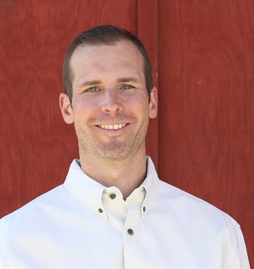
Resource Economist and Environmental Markets Lead
Utilizing Carbon Markets to Further Waterfowl Habitat Delivery: Opportunities, Limitations, and Lessons Learned
Ducks Unlimited has certified and transacted more grassland carbon credits than anyone else in the world to date. While there have been successes along the way worth reviewing, there remain challenges to scaling these ever-changing programs in a way that works for landowners and the conservation community. Hear how DU has navigated the dynamic carbon markets and where opportunities and remaining hurdles lie for utilizing this line of finance for waterfowl habitat conservation.
March 24, 2021, 1-2 PM EDT
Dr. Scott Manley, Ducks Unlimited
Director of Conservation Innovation/ Dir. of Conservation Programs MS, TN, AR, North LA, AL
Rice Stewardship Partnerships
Working ricelands, water, and waterfowl, a critical synergy for priority wintering landscapes across the Mississippi Alluvial Valley, Gulf Coast, and California’s Central Valley.
Join the seminar to learn about the Rice Stewardship Partnership. In 2013, the USA Rice Federation and Ducks Unlimited came together to form the USA Rice-DU Stewardship Partnership. The Partnership works to bring about meaningful and long-term improvements to three of the nation's critical natural and economic resources: waterfowl, working rice lands and water.
To learn more, be sure to visit: https://www.ducks.org/ricestewardship
February 26, 2021, 1 - 2 PM EST
Jacob Bushaw, Two-Tiered Waterfowl Biologist
Nebraska Game and Parks Commission
Rocco Murano, Senior Waterfowl Biologist
South Dakota Department of Game, Fish, and Parks
A 2-tiered duck regulation experiment: Can a simplified regulation option increase recruitment, retention, and reactivation of duck hunters in South Dakota and Nebraska?
Declines in waterfowl hunter participation in the Central Flyway and across North America have been well documented. These declines are a concern for the potential loss off financial and political support for waterfowl conservation and the duck hunting tradition. While the reasons for this decline are many, the ability to identify ducks on the wing has been identified as a potential barrier for prospective duck hunters. Through a partnership with the Central Flyway Council, USFWS, SDGFP, and NGPC we intend to evaluate a “2-tiered” regulation system whereby hunters can choose either a standard package with all species and sex restrictions or a simplified 3 duck limit without restriction.
December 10, 2020 1-2 PM EST
Joy Morris and Laurel Anders, IWJV
Working Wetlands & Water in the West 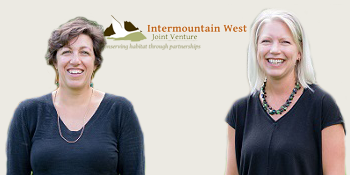
The Intermountain West Joint Venture’s newest initiative, Water 4, is focused on conserving working wet meadows and water for agriculture, wildlife and fisheries habitat, groundwater recharge, and landscape resiliency in ways that matter to people. Since its launch in January 2019, Water 4 has focused on the geographies of significance to waterfowl and other wetland-dependent birds and effectively moved the needle to increase the pace of conservation on private wetlands and irrigated wet meadows, all of which is directly tied to making conservation work relevant to people. The relevancy to people focus started with IWJV’s early work studying the human dimension aspect of how ranchers view flood irrigation, a practice extremely important to Pacific Flyway waterfowl.
Join the seminar to hear how over the last two years, Water 4 has gained significant traction in ranching, irrigation, fisheries, and landscape resiliency which is resulting in new funding streams for waterfowl habitat conservation in the Intermountain West.– (Water 4) Initiative
November 18, 2020 1-2 PM EST
Dave Howerter and Nigel Simms, DU Canada
The Ripple Effect: Ecological services and the future of Lake Winnipeg
Nowhere are Canada’s water woes more evident than on the often algae-slicked shores of Lake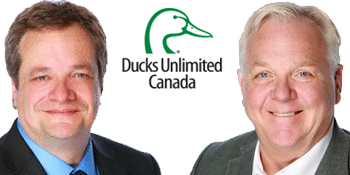 Winnipeg. Runoff from the surrounding landscape is depositing huge amounts of phosphorous into the rivers and streams that feed the lake. The world’s 10th largest freshwater lake is in trouble. A multiphase research project to determine the impacts of wetland loss in the Broughton’s Creek watershed, which feeds into Lake Winnipeg, paints a clear but startling picture: the future of Lake Winnipeg depends on a greater understanding of wetlands and the significant role they play beyond waterfowl. Through its research and communications efforts on ecological services, Ducks Unlimited Canada is engaging political leaders, industry representatives and the public on the essential role of waterfowl habitat conservation in saving Lake Winnipeg, a precious natural resource.
Winnipeg. Runoff from the surrounding landscape is depositing huge amounts of phosphorous into the rivers and streams that feed the lake. The world’s 10th largest freshwater lake is in trouble. A multiphase research project to determine the impacts of wetland loss in the Broughton’s Creek watershed, which feeds into Lake Winnipeg, paints a clear but startling picture: the future of Lake Winnipeg depends on a greater understanding of wetlands and the significant role they play beyond waterfowl. Through its research and communications efforts on ecological services, Ducks Unlimited Canada is engaging political leaders, industry representatives and the public on the essential role of waterfowl habitat conservation in saving Lake Winnipeg, a precious natural resource.
October 15, 2020 1-2 PM EDT
Mike Carter, Coordinator, Playa Lakes Joint Venture (PLJV)
Connecting People and Playas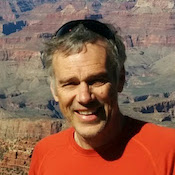
This is a story about how PLJV linked our playa conservation mission to the consequences of a declining aquifer, which agricultural producers and communities depend upon for their livelihood, and created a venue where solutions are found for both humans and wildlife. From a random survey question in 2006 to a decade of communication campaigns, the effort has benefited from both happenstance to pure focus and determination. In some ways, we muddled along; while in others, we had the opportunity to engage producers through well-funded efforts. In this talk, we follow the timeline of events, relay our thinking along the way and some of the tools we used, give a current project status, and describe where we succeeded and where we still have work to do. In 2020, we continue to expand the work into more areas, adapting the model to fit each situation, which is stretching even PLJV’s vision of implementation.

